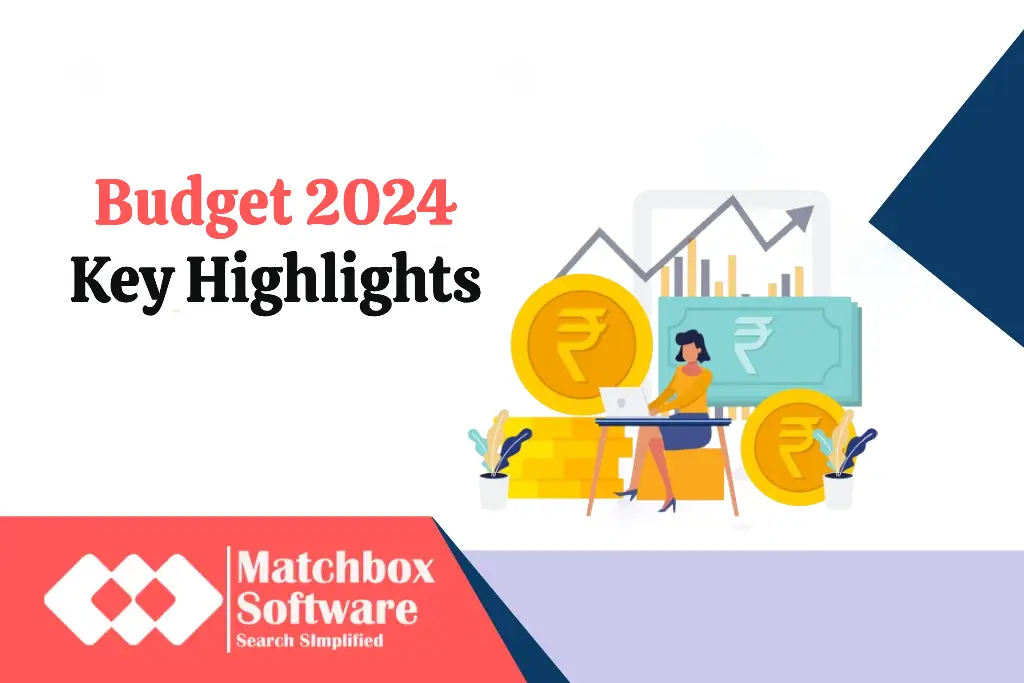Decoding India’s Interim Budget 2024 Key Highlights and Implications

The Interim Budget 2024 was presented by Union Finance Minister Nirmala Sitharaman on February 1st 2024, her sixth budget presentation. The budget, which prioritised fiscal consolidation and sustained capital expenditure, kept youth and women’s empowerment front and centre ahead of the approaching general elections. These are the Budget 2024 key highlights and implications.
Explore Some Finance Management Softwares
India’s Interim Budget 2024 Key Highlights and Implications

Let’s examine the main points and assess their possible significance:
Fiscal Consolidation Takes Center Stage:
Reduced Fiscal Deficit:
In a sign of its commitment to fiscal prudence, the government plans to reduce the fiscal deficit to 5.1% of GDP in FY 2024–2025. This suggests prudent financial management and might bolster investor confidence.
Borrowing Targets Lowered:
The government’s borrowing targets, net and gross, are ₹11.75 lakh crore and ₹14.13 lakh crore, respectively. This indicates a more controlled approach to borrowing and could result in more stable interest rates.
Boosting Infrastructure and Development:
Record Capital Expenditure:
To hasten infrastructure development and generate employment, the budget allots an astounding ₹11.11 lakh crore for capital expenditures, the highest amount ever. Manufacturing, transportation, and construction could all benefit from this.
Focus on Eastern Corridor:
Emphasis on the Eastern Corridor The budget prioritises the development of eastern India by means of enhanced connectivity and infrastructure initiatives, acknowledging the region’s potential. This might open up new business opportunities for the area.
Empowering Youth and Women:
Skill Development Initiative:
The Pradhan Mantri Kaushal Vikas Yojana 4.0, which aims to equip young people with the skills needed by industry, was announced by the government. The goal of this is to increase employability and close the skill gap.
Women Entrepreneur Support:
The budget increases the availability of credit guarantee programmes for female entrepreneurs, making it simpler for them to obtain funding and promoting their involvement in the business community.
Other Key Announcements:
No Change in Direct and Indirect Taxes:
The budget keeps taxes at their current levels, giving people and businesses security.
Affordable Housing Push:
To meet the housing needs of lower-income groups, the government intends to subsidise the construction of 30 million affordable homes in rural areas.
Focus on Healthcare:
Efforts to improve access to healthcare are demonstrated by programmes like those that combine maternity and child health care plans and encourage the vaccination against cervical cancer.
Principal Aspects of Finance Minister Sitharaman’s Post-Budget Press Conference:
This live update highlights the most important points discussed at the press conference following the budget, illuminating policy directions and important lessons learned.
5 ‘Disha Nirdashak’ Baatein:
FM Sitharaman emphasized five key principles:
- Social justice as an effective governance model.
- Focus on the poor, youth, women, and farmers (Annadata).
- Prioritization of infrastructure development.
- Utilization of technology to enhance productivity.
- Formation of a high-power committee to address challenges arising from demographic shifts.
GDP Growth:
India has witnessed three consecutive years of 7% GDP growth, establishing itself as the fastest-growing economy within the G20 nations.
Definition of GDP:
Sitharaman highlighted the significance of GDP, associating it with Government, Development, and Performance. The government has effectively delivered on development and has adeptly managed the economy despite challenging circumstances.
Continued Capex:
The Finance Minister affirmed that government capital expenditure (Capex) would persist as a crucial element, emphasizing its importance for sustained economic growth.
IMEC Project:
Despite disturbances in the Red Sea region, India is committed to advancing the India-Middle East-European Corridor (IMEC) project, underscoring its dedication to enhancing regional connectivity.
Direct Tax Demands Withdrawal:
The withdrawal of 1.1 crore outstanding small direct tax demands for specific years will result in a cost of less than ₹3,500 crore to the exchequer, according to Revenue Secretary Sanjay Malhotra.
Tax Rate Clarification:
FM clarified that the lower tax rate would not be extended to new manufacturing units established after March 2024
Definition of GDP:
Sitharaman highlighted the significance of GDP, associating it with Government, Development, and Performance. The government has effectively delivered on development and has adeptly managed the economy despite challenging circumstances.
Disinvestment Target:
DIPAM Secretary Tuhin Kanta Pandey indicated that there is no fixed target for disinvestment in FY25, providing flexibility in strategic decision-making.
Fiscal Consolidation:
FM Sitharaman highlighted the government’s commitment not only to align with the fiscal consolidation path set earlier but also to exceed it, signaling responsible financial management to credit rating agencies.
Debt-to-GDP Ratio Examination:
Finance Secretary TV Somanathan stated that the relevance of the target to reduce the Centre’s debt-to-GDP ratio to 40% needs reevaluation in light of the post-COVID-19 period.
India’s Interim Budget 2024 Key Highlights inshorts:
Budget 2024 Key Highlights distribution among major sectors from highest to lowest .
- Defense: ₹6.2 lakh crore💂♂
- Road Transport: ₹2.78 lakh crore🛣
- Railways: ₹2.55 lakh crore🚆
- Consumer Affairs: ₹2.13 lakh crore🛒
- Home Affairs: ₹2.03 lakh crore🏠
- Rural Development: ₹1.77 lakh crore🌾
- Agriculture: ₹1.27 lakh crore🌾
For detailed insights:
- Interim Budget 📅 (Feb 1, 2024):
- Focused on maintaining existing policies.
- Infrastructure emphasis, highest Railways outlay: ₹2.4 lakh crore.
- Revised estimates: ₹27.2 lakh crore receipts, ₹45 lakh crore expenditure.
- Fiscal deficit: 5.9% of GDP.
- Full Budget 💼 (July 2024):
- Outlining economic vision, priorities.
- Presented by the new government post-elections.
- Potential changes in taxes, spending, and welfare programs.

